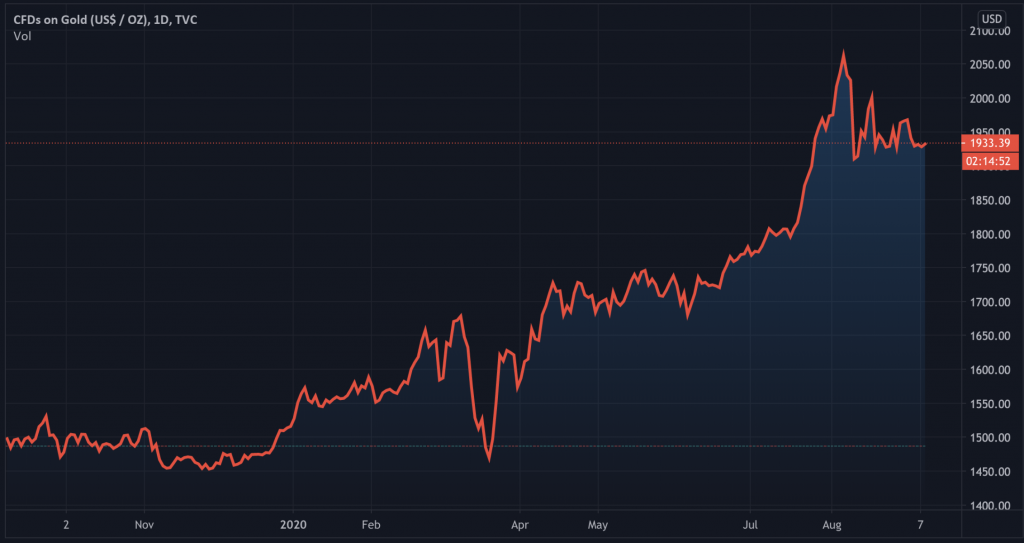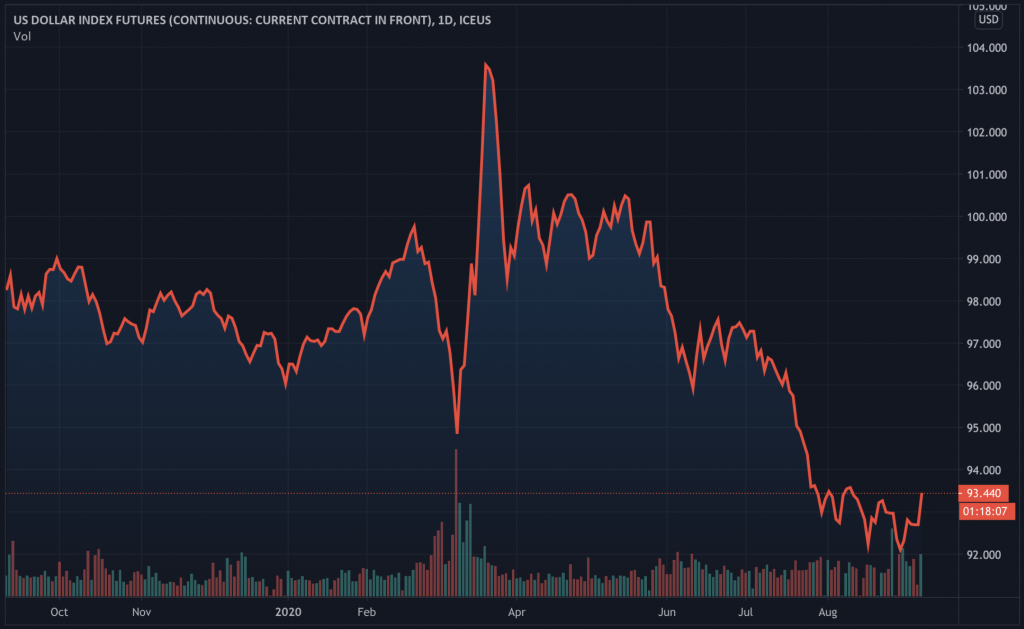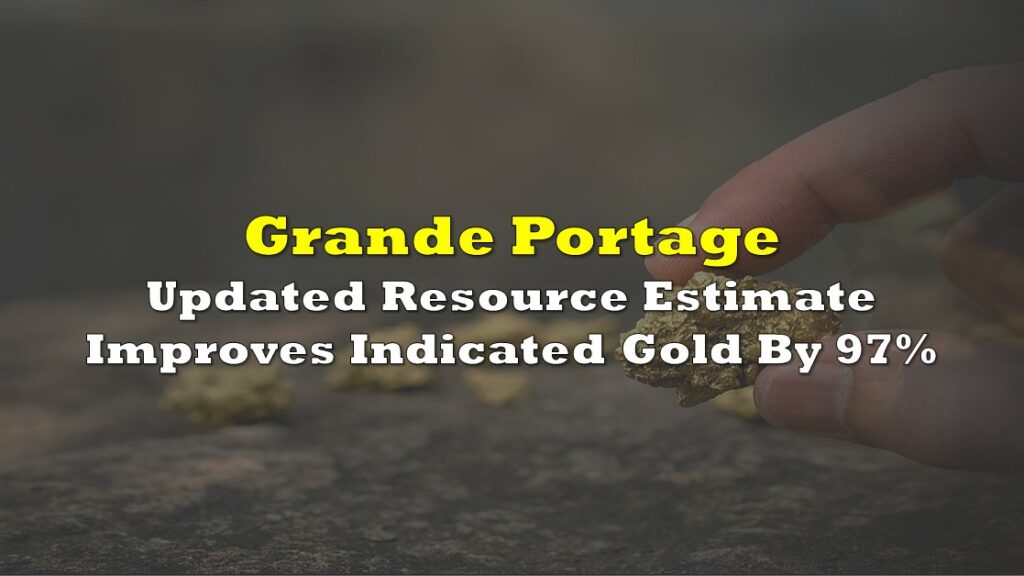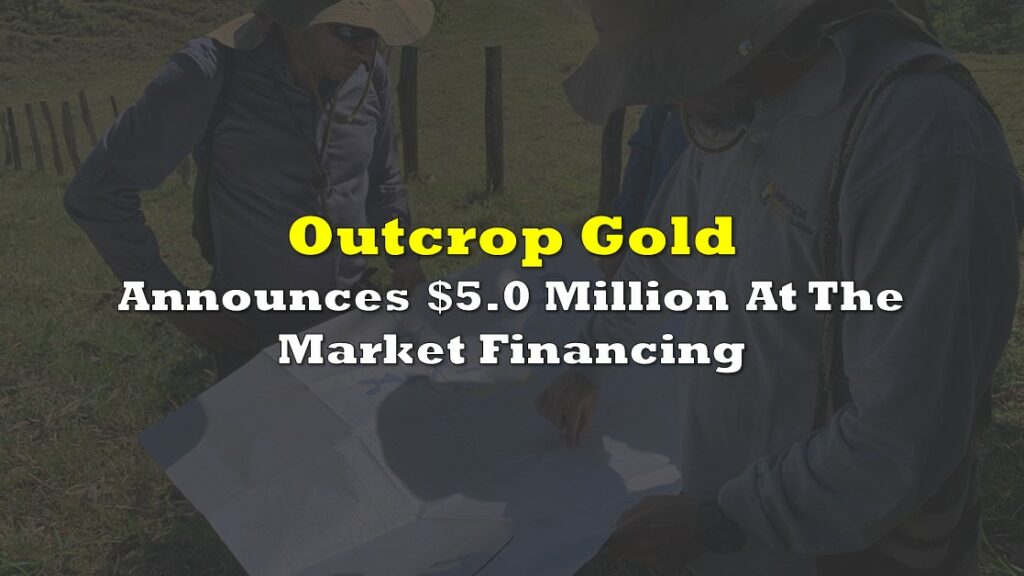As the coronavirus pandemic continues to wreak havoc on many economies across the world, investors have increasingly been flocking to gold as a safe haven. As a result, the price of gold has seen some incredible gains over the past six months, reaching record-highs and thus causing many analysts to continuously update their projections.
Since the beginning of the year, the price of gold has increased by more than 25% – the largest gain in such a short period in over a decade. This comes as hardly a surprise, given that the precious metal has always served as a safe haven asset during times of economic turmoil. However, given the historically unprecedented events that are unfolding as a direct result of the coronavirus pandemic, the future path of gold prices could certainly turn towards the path of the unknown.

Although the state of the US economy has seen a slight improvement since its record-lows of March and April, many investors along with Wall Street and hedge funds still continue to hold a bullish outlook for gold. In fact, Bank of America Merrill Lynch is calling for gold to skyrocket to $3,000 by the beginning of 2022, while Citigroup is predicting that gold will reach an astounding $5,000 per ounce. Although such projections seem like an overstatement for the precious bullion, given the unraveling of historic events, it just may hinge on the realm of reality.
In the event that gold does somehow climb to $3,000 or even $5,000, there are several significant implications that would result. The gold market has a tendency to perform well during times of negative or flat bond returns, increased stock market volatility, or low-interest environments – precisely the kind of variables that have become evident during the current economic crisis.
However, long before the onset of the coronavirus pandemic, the gold market was already showing signs of heightened activity. Given that the global economy was slipping deeper and deeper into volatile territory, many central banks around the world slashed interest rates to historic near-zeros in effort to spur markets. In fact, this sort of behaviour by central banks has been on the agenda since the 1970s, following America’s abandonment of the gold standard.
Moreover, the sudden and exorbitant stimulus spending by central banks over the last six months have also played a compelling role in the gold price rally. The world’s central banks have dished out stimulus packages totalling a staggering $15 trillion in order to soften some of the effects of the pandemic. Although the generous central bank behaviour has certainly aided in the health of stock markets, it has also evidently lead to some unintended consequences, such as the dreaded “cobra effect.”
One one of the implications of unchecked stimulus spending is the weakening of the country’s currency. As Peter Schiff pointed out, the continued money-printing, which has become an inherent policy of the Federal Reserve, will ultimately lead the US dollar towards collapse. When a weak dollar is evident, it tends to drive up dollar-denominated commodities even further.

So what is the end result in terms of soaring gold prices? Well for starters, such high gold prices would also coincide with hyperinflation, which would cause prices of goods and services to skyrocket by at least 50% each coming month. An even worst-case scenario would be a repeat of the 1970s, where the US economy fell into a period of stagflation as unemployment ran high, inflation continued, and demand for goods and services remained subdued.
Most importantly however, if such a scenario was to arise during the current pandemic, it would be coupled with its own set of dilemmas. The US would enter into a period of social and political unrest, which would further fuel the country’s economy into the death spiral of hyperinflation, causing commodity prices to skyrocket. In fact, the true value of many commodities would fall substantially, as consumers averted their attention towards mere survival through the economic collapse.
Further charting into scarier waters, if gold prices were to hypothetically reach – lets say $10,000 per ounce – then that would most likely spell the end of the US dollar as the world’s reserve currency. Many other fiat currencies would also see their value collapse, while a currency such as the Swiss franc would take over as the world’s reserve currency. Then the plot would thicken as First World governments would delve into a pandora’s box of tricks, such as imposing currency controls on money entering their country, or even go as far as confiscating privately-held bullion, would would just be a repeat move of the US government from the Great Depression.
Such a disastrous scenario is certainly frightening to think about. However, given the unraveling of past economic events during times of similar turmoil, it could provide a window into the impending state of the US economy. In fact, several months ago the World Bank forecast that the current crisis will most likely submerge the world economy into the worst recession since the Second World War.
Given that such an event as the coronavirus pandemic has not been witnessed in our lifetime, such a scenario as the one predicted by the World Bank is of course plausible. A gold price increase of anywhere between 10% and 30% over the next two years will most likely not plunge the world into complete anarchy, but then again, accurate economic predictions in times of an unforeseen global pandemic may also be difficult to find.
Information for this briefing was found via Bank of America, Citigroup, and World Bank. The author has no securities or affiliations related to this organization. Not a recommendation to buy or sell. Always do additional research and consult a professional before purchasing a security. The author holds no licenses.










One Response
You do understand that the US has a great deal of leg room by which to destroy the current fools gold rush right?
First the US can import increases on bank holding rates which will suck up potentially 100 trillion dollars if need be.
Second the US can impose higher interest rates will increase the relative value of US dollars.
Finally the US can issue long term bonds and higher taxes which further increase the value of the US dollar.
This notion that gold is a solid bet is as silly as it gets.